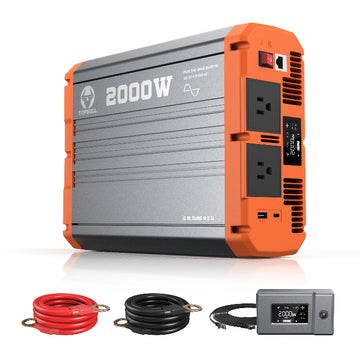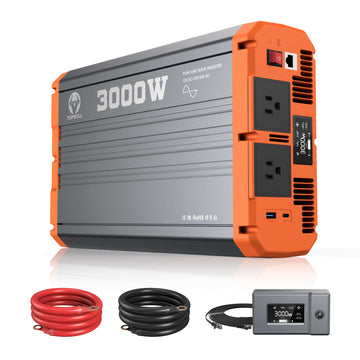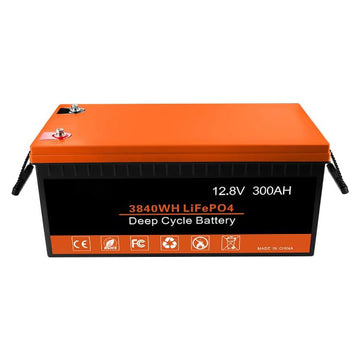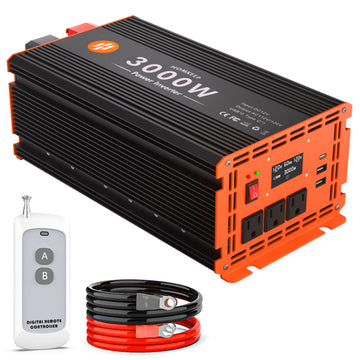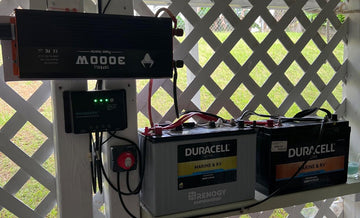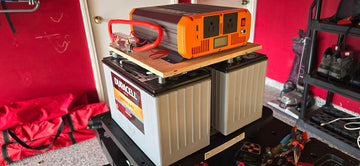Inverters are core components in solar power systems, energy storage systems, and mobile power supplies, converting direct current (DC) to alternating current (AC) for use in homes or industrial equipment. As a bridge between clean energy and everyday power usage, the stability and durability of the inverter is critical. Understanding the lifespan of an inverter not only helps to make the right investment decision, but also relates to the reliability and safety of the system's long-term operation.
Average service life of an inverter
Under normal use and maintenance conditions, the service life of an inverter is usually between 5~15 years.
Household inverters: If the operating environment is good and the loads are properly matched, they can usually reach 10~15 years of service life.
Commercial/industrial grade inverters: Due to long term high load operation, their lifespan is 5~10 years on average, which is more dependent on the daily maintenance and heat dissipation design of the system.
Difference between different types of inverters: Grid-connected, off-grid or hybrid inverters, depending on their control logic and usage scenarios, the service life will also be differentiated.
- Grid-connected inverters (without batteries) have a longer lifespan, usually between 10-15 years
- Off-grid and hybrid inverters (with battery management) are susceptible to charging and discharging cycles and have a relatively shorter lifespan, usually between 5-10 years.

Key Factors Affecting Inverter Life
1. Component Quality
High-quality core components such as capacitors, inductors, MOS tubes, etc. can withstand higher voltage and temperature shocks, and enhance the anti-aging ability of the whole machine. Low-quality components are prone to early failure due to overheating or voltage fluctuations. 2.
2. Thermal Management Capability
The thermal system directly determines the internal temperature rise of the inverter. Good air-cooled or liquid-cooled design can effectively slow down the aging of electronic components, while the opposite may lead to frequent high-temperature alarms and shorten the lifespan.
3. Load Mode
When the inverter is running under full load or overload for a long period of time, the components will be under high stress for a long time, which will accelerate the loss and shorten the life span. Therefore, a reasonable power margin has a significant impact on the life of the inverter.
4. Maintenance and Cleaning
Regular cleaning of dust, checking cable connections, and troubleshooting loose wiring can prevent heat buildup and poor contact, which is one of the most important measures to extend the service life.
5. Installation Environment
Humid, high temperature, dusty or vibrating environment will accelerate the equipment damage. It is recommended to install in a dry and ventilated place, away from flammable products and strong magnetic field area.
6. System Software Stability
Whether the control program is stable and upgraded in time is also critical. Wrong parameter settings or bugs may affect the efficiency of the whole machine, or even damage the hardware.
Comparison of actual age of inverters of different powers
The lifespan of inverters in different power bands will be different due to their different carrying capacity, usage scenarios and operation status. The following is a reference of the service life of common power levels:
| Inverter Power | Recommended Scenarios | Average actual years |
| 1000W | RV / in-vehicle, mobile charging stations | 6 to 10 years |
| 3000W | Home emergency, solar, power tool power | 8 to 12 years |
| 5000W+ | Commercial and industrial high power systems | 5 to 10 years |
Note: If the inverter is run at the recommended power limit for a long period of time, the actual life span may be greatly reduced. For example, a 3000W power inverter running at or near 3000W maximum power for a long period of time lacks proper recuperation time. Its service life may be shortened to less than 5 years.
Signs before inverter failure
There are usually some “warning signs” before inverter failure, such as:
- unstable output voltage or frequency, tripping phenomenon from time to time
- Frequent display of error codes on the screen, and equipment alarms
- Abnormal noise from the heat dissipation fan, or stop running
- Significantly reduced system conversion efficiency, and frequent flashing of electrical appliances. Difficulty in starting, or automatic restart repeatedly
Once the above signs are found, timely investigation and maintenance should be carried out to prevent more serious damage.
How to extend the service life of the inverter?
In order to make the inverter run stably for 10 years or even longer, the following suggestions are very critical:
- Selection with margin: choose a model with rated power 20~30% higher than the actual power used, avoiding long time full-load operation.
- Good operating environment: The inverter should be installed in a dry and ventilated location without direct light, avoiding high temperature and humidity.
- Regular maintenance: Check the terminals, heat sinks, filters and capacitor health status once a year, preventive maintenance is more cost-effective than repair.
- Lightning surge protection: A surge protector should be installed when used outdoors or in a minefield to avoid grid shocks.
- Firmware Upgrade: Keeping the inverter control program up-to-date helps to fix known problems and optimize the operation logic.
When do I need to replace my inverter?
The following situations may mean that replacing the inverter is inevitable:
- It has exceeded the warranty period, with frequent failures and high maintenance costs
- Conversion efficiency has dropped significantly, dragging down the power generation efficiency of the whole system
- System upgrades, such as replacing batteries, increasing the capacity of PV arrays, the original inverter is not able to cope with the task
- The new generation of products has the advantages of intelligent control, remote control and higher energy efficiency, for example, the upgraded version of the Topbull series. For example, the Topbull Upgrade series has further improved the performance of intelligent protection, remote control and efficiency. When the inverter is aging or the system is being upgraded, choosing a new model with higher efficiency and intelligence not only prolongs the life of the system, but also optimizes the overall energy management capability.
Click here to learn about Topbull 2000W, 3000W and 4000W upgraded inverters.

Summary: How long can an inverter actually last?
The actual lifespan of an inverter is affected by multiple factors, from the quality of the core components to the daily operation and maintenance, to the choice of installation environment, every detail determines how long it can accompany you. Overall, a good quality home inverter can work stably for 10~15 years, while a high load commercial system may need to be replaced between 5~10 years. The lifespan of inverters with different power levels, such as 1000W, 3000W or 5000W+, may also vary slightly due to different operating conditions and application scenarios.
Through proper selection, scientific installation, regular maintenance, and upgrading to a new generation of inverters at the right time, users can not only maximize the life of the equipment, but also significantly improve the overall efficiency and stability of the system.
Topbull's upgraded inverters, which combine high conversion efficiency, intelligent monitoring system and superior thermal management design, and are suitable for a wide range of power requirements (from 2000W to 4000W), are the ideal choice for both home and commercial scenarios. If you are considering replacing your old equipment or building a new energy system, Topbull inverters are a reliable upgrade option.

